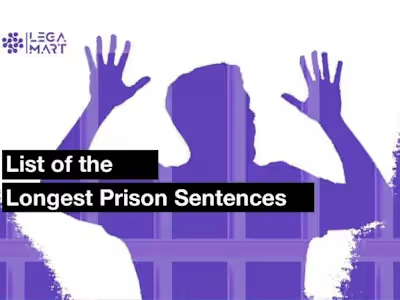Paperback book for a Hair Growth Company
Chapter 1
Into my Story and my own Struggle with Getting Care for My Hair
From Personal Struggle to Professional Triumph:
I'm W——- ——z, a name some of you might know in the realm of trichology. You see, I've spent the last 20 years navigating the intricate world of hair health, helping countless individuals rediscover the joy of seeing their hair flourish once again. But let's take a step back for a moment, because my journey to this point? Well, it's been anything but straightforward. Originally, my dreams were sketched out in blueprints and designs; I was on my way to becoming an architect. But life, with its unpredictable twists and turns, had a different blueprint in mind for me. It led me down a path I never anticipated, straight into the heart of trichology. And you know what? This detour stemmed from a very personal struggle—my own battle with hair loss.
It's a bit ironic when I think about it. There I was, aiming to build structures, when suddenly I found myself needing to rebuild something far more personal: my hair, my confidence, my whole perspective on health and wellness.
Reflecting on my own journey, I can't help but dive deep into the whirlwind of emotions and revelations that began when I was just 17. It's a pivotal age for many, and for me, it marked the beginning of a personal challenge—hair loss. The experience is akin to a rite of passage that many of us reluctantly face, yet it's shrouded in a mix of denial and quiet panic. I vividly recall a conversation with a guy in his early twenties, myself barely out of my teens, expressing my growing concerns about losing hair. He, with his head confidently shaved, claimed he couldn't care less about hair, suggesting I do the same. But in my heart, I knew it wasn't that simple. The thought echoed in my mind, "Would you really feel the same if you were in my shoes?"
This internal dialogue wasn't just idle musings; it became the bedrock of my approach to helping others. My personal battle wasn't just with hair loss itself but with the sea of emotions it unleashed. It's this emotional journey, coupled with the technical challenges, that I bring into every consultation, every piece of advice I give to my clients. Because, let's face it, navigating the hair loss industry feels like trying to find a needle in a haystack—a haystack that's often misleading and saturated with quick fixes that promise the moon.
The truth is, the industry is fraught with solutions that are as diverse as they are complex. There's no magic pill, no universal cure that works for everyone, and that's a
hard pill to swallow. The realization that we're all unique, with our own set of genetic, environmental, and health-related factors, complicates the journey to finding the right solution. It's a maze that requires patience, understanding, and a good dose of skepticism.
In my early days of grappling with hair loss, I felt the weight of misinformation and the daunting task of sifting through endless "miracle" solutions. It was a journey that took me from one supposed remedy to another, each promising more than it could deliver. But this journey wasn't in vain. It armed me with invaluable insights and a determination to cut through the noise, to seek out answers that aren't just effective but are tailored to the individual.
As I share my story, it's not just a recount of personal battles and industry pitfalls. It's an invitation to anyone standing at the crossroads of hair loss, feeling overwhelmed by the choices and promises. My message is simple: understand your unique story, your body, and don't be swayed by the one-size-fits-all solutions. The path to managing hair loss is as personal as the reasons behind it, and it's paved with knowledge, understanding, and a critical eye.
Navigating the hair loss industry is no easy feat, but with a clear understanding of your own situation and armed with the right questions, it's possible to find a way forward. My journey from confusion to clarity, from a teenager troubled by hair loss to a trichologist dedicated to helping others, has taught me the importance of personalized solutions. And it's this lesson I hope to pass on—to help others find their path, informed, confident, and ready to tackle their hair loss head-on.
At 17, while navigating the structured world of an all-guys military school, I encountered an unexpected challenge: hair loss, a surprisingly common issue among my classmates. This early experience led me to my first attempt at a solution, Rogaine, a straightforward 5% minoxidil formula. Applying it once daily became a part of my routine, and to my relief, it seemed to halt the hair loss during my senior year.
During this time, I was also heavily into fitness, regularly using supplements like creatine and Tribulus to enhance my workouts and testosterone levels. What I didn't realize was that this regimen was quietly exacerbating my hair loss. Back in the '90s, the link between these supplements and hair loss wasn't widely recognized, a connection I only made in retrospect.
Later, as a college student working as a chemical salesman in the sprawling city of Phoenix, Arizona, I spent my days visiting various shops, unknowingly exposing myself to a myriad of chemicals. Initially, I didn't think much of it; after all, I didn't
seem to have any immediate reactions to these substances. However, after a year of working in that environment, my hair loss accelerated significantly, teaching me a valuable lesson: sometimes, the factors affecting our well-being are the ones we least expect.
Imagine being 20, standing at the threshold of life's many adventures, only to watch in disbelief as your hair thins at an alarming rate. In just six months, half of my hair volume vanished, a stark contrast to the gradual fade of normal male pattern loss, which typically takes years to make its mark. There I was, barely out of my teens, grappling with the daunting prospect of being bald by 25.
The thought consumed me. I found myself entertaining the most irrational ideas, driven by a sudden urgency to live life to the fullest while I still had hair. Marry soon? Because, let's face it, I jokingly told myself, who would choose someone with a "funny shaped head" to grow old with? It was a race against time to experience freedom, to travel the world, all under the shadow of impending hair loss.
These thoughts, as irrational as they were, stemmed from a deep-seated fear. After all, so much of our identity is tied to our reflection in the mirror, to the persona we present to the world. Losing my hair felt like losing a part of myself, a part that had always been there, taken for granted until it began to fade away. This wasn't just about vanity; it was about confronting a change that seemed to threaten the very essence of how I saw myself and how I believed the world saw me.
The Trial of Treatments!
Amidst this personal turmoil, my job at the chemical company and my studies provided me with the means to embark on an exhaustive quest for solutions. Rogaine, my initial ally, betrayed me as my scalp rebelled against its formula, leaving me with a scaly irritation and flakes reminiscent of potato chips. Despite the discomfort and the glaring signs of an adverse reaction, my desperation kept me hopeful for a turnaround that never came.
The journey didn't stop at Rogaine. Finasteride, or Propecia, entered the scene as the next beacon of hope. Back then, its widespread acceptance today as a cornerstone treatment for hair loss was just beginning. Armed with optimism, I introduced it into my regimen, expecting it to be the remedy I was searching for. Yet, the hair loss persisted, undeterred by the dual forces of Rogaine and Finasteride.
In my relentless search for a cure, I encountered Kevis, a product line that touted the use of clone sperm cells to regenerate hair follicles—a claim as intriguing as it was scientifically dubious. Despite the lack of evidence, my desperation led me to try it,
along with any other remedy that held even the slightest promise of reversing my hair loss. The bathroom became a site of dread, where clumps of hair in the shower drain were a daily reminder of my ongoing struggle.
Looking back, armed with knowledge and experience, I understand that my reaction was far from typical male pattern baldness. The rapidity and severity of my hair loss, coupled with the adverse reactions to treatments, painted a picture of a complex issue that required a nuanced understanding of hair health, beyond the one-size-fits-all solutions that I was grasping at.
There is more that can be done!
At 20, facing rapid hair loss, I found myself at a crossroads, seeking solutions from top physicians in Phoenix. Yet, each visit ended with the same disheartening advice: "You're doing all you can with finasteride and minoxidil. Maybe consider a hair transplant." Imagine being 20 and hearing you might need to accept baldness soon, especially when you're just not ready for that step.
My next hope was Bosley, a name well-known for hair restoration. Filled with anticipation, I went for a consultation, only to be told I was too young and needed to lose more hair before they could help. This wasn't just disappointing; it felt like hitting rock bottom in my search for answers.
That moment was a turning point for me. It became clear that if I was going to find a solution, it would have to be through my own efforts. Despite having a full head of hair just a year earlier, I was now grappling with a reality where experts said they couldn't help.
Fast forward to today, as I approach my 43rd birthday with most of my hair intact, I look back on the journey that led me here. The breakthrough came from an unexpected place: a company in Australia pioneering low-level laser therapy for hair loss. At a time when the internet was still finding its feet, discovering this technology felt like striking gold. Despite the skepticism surrounding laser treatments, importing and using this laser was the first step that actually made a difference for me, addressing the root causes of my hair loss.
This experience wasn't just about stopping hair loss; it was a deep dive into understanding the condition and finding my own path to recovery. It led me to step away from conventional treatments and embrace laser therapy, which turned out to be the key to regaining my hair. More than a personal victory, this journey ignited a passion for trichology, steering me away from my original path in architecture.
Discovering the effectiveness of laser therapy for my hair loss was a game-changer. It was a light at the end of a long, dark tunnel, and it sparked an idea that felt almost revolutionary. I thought, "If this can work for me, why not for others?" That realization was the catalyst for a bold decision: to start my own business focused on laser hair regrowth. The naysayers had told me I'd hit a dead end, but here I was, finding a new path forward.
So, at the age of 22, fueled by optimism and a desire to make a difference, I opened the doors to my very first laser hair regrowth clinic. It was a leap of faith, grounded in my own journey and the belief that there was a gap in the market just waiting to be filled. And now, as I reflect on this journey, I'm on the brink of celebrating a milestone that, back then, seemed like a distant dream: our 20th anniversary is just around the corner, six weeks away to be exact. Looking back, it's almost surreal to think it's been 20 years since I embarked on this adventure.
One-size-fits-all stuff: A Blind Alley
Embarking on my own journey with hair loss not only opened my eyes to the complexities of my situation but also ignited a curiosity about the diverse experiences of others. It quickly became clear that the path to understanding hair loss is as unique as the individuals walking it. This realization was both a revelation and a challenge, as it underscored a fundamental issue within the hair growth industry: the prevalence of a one-size-fits-all approach.
In navigating the vast landscape of hair loss solutions, I encountered countless stories, opinions, and even entire industries dedicated to critiquing the hair loss sector. This level of scrutiny was eye-opening and highlighted a stark reality—the criticism often stems from genuine issues within the industry. Yet, this isn't without reason. The complexity of hair loss, compounded by the uniqueness of each individual's experience, makes finding effective solutions a daunting task.
The common narrative that you'll encounter, where hair loss is quickly attributed to male pattern baldness necessitating DHT blockers, Rogaine, or finasteride, barely scratches the surface. My personal battle with diffuse alopecia areata, an inflammatory condition, served as a poignant reminder that there's a world of difference between various types of hair loss, each demanding a tailored approach.
For instance, what appears as hair thinning on the scalp could easily be misdiagnosed as male pattern loss when, in reality, it might be something entirely different. Conditions like telogen effluvium can cause significant hair shedding following a stressful event, underscoring the fact that not all hair loss is permanent or responds to the same treatment.
Like this project
Posted Aug 20, 2024
This project is a paperback book for a hair growth company, detailing effective hair care routines and product recommendations.







